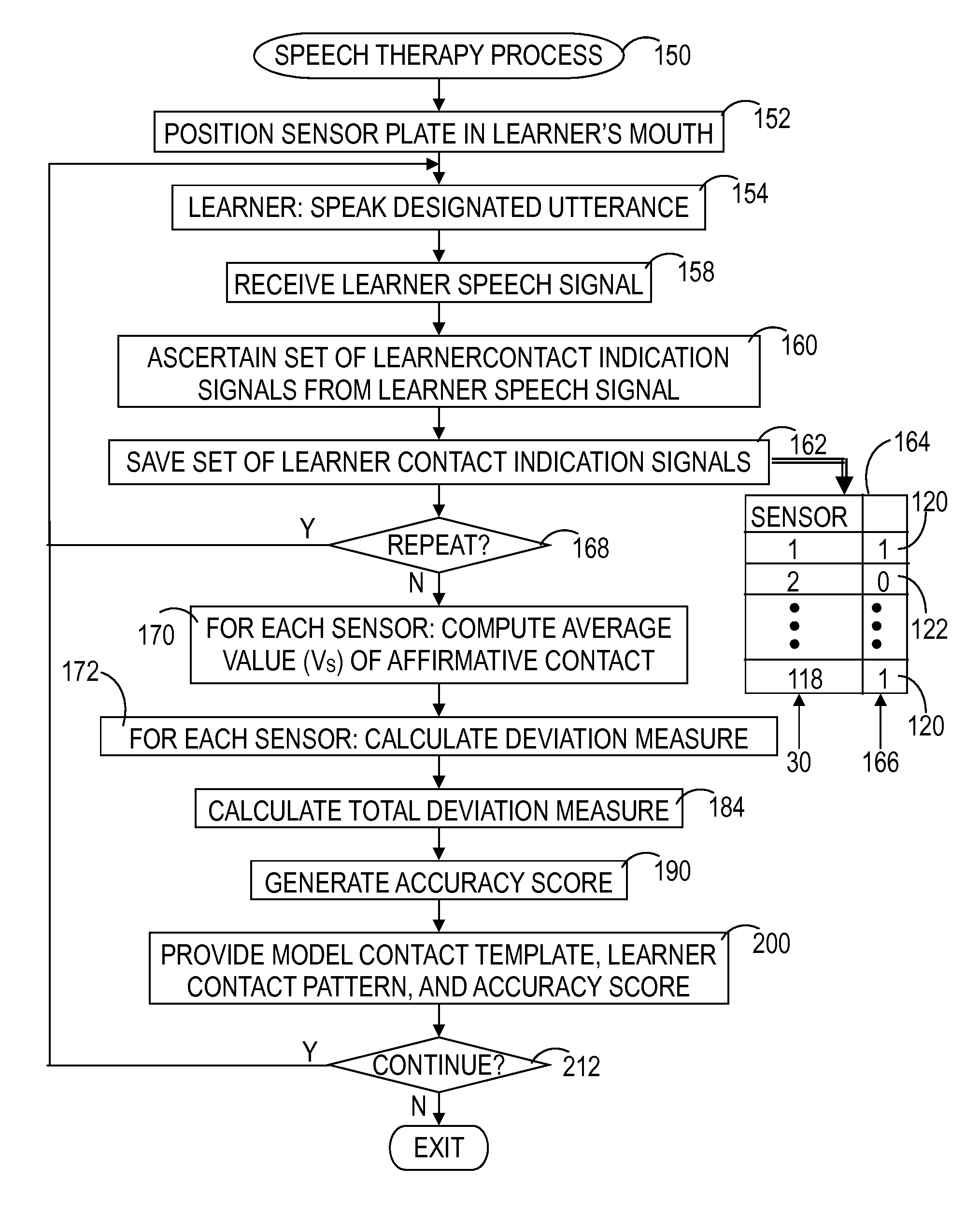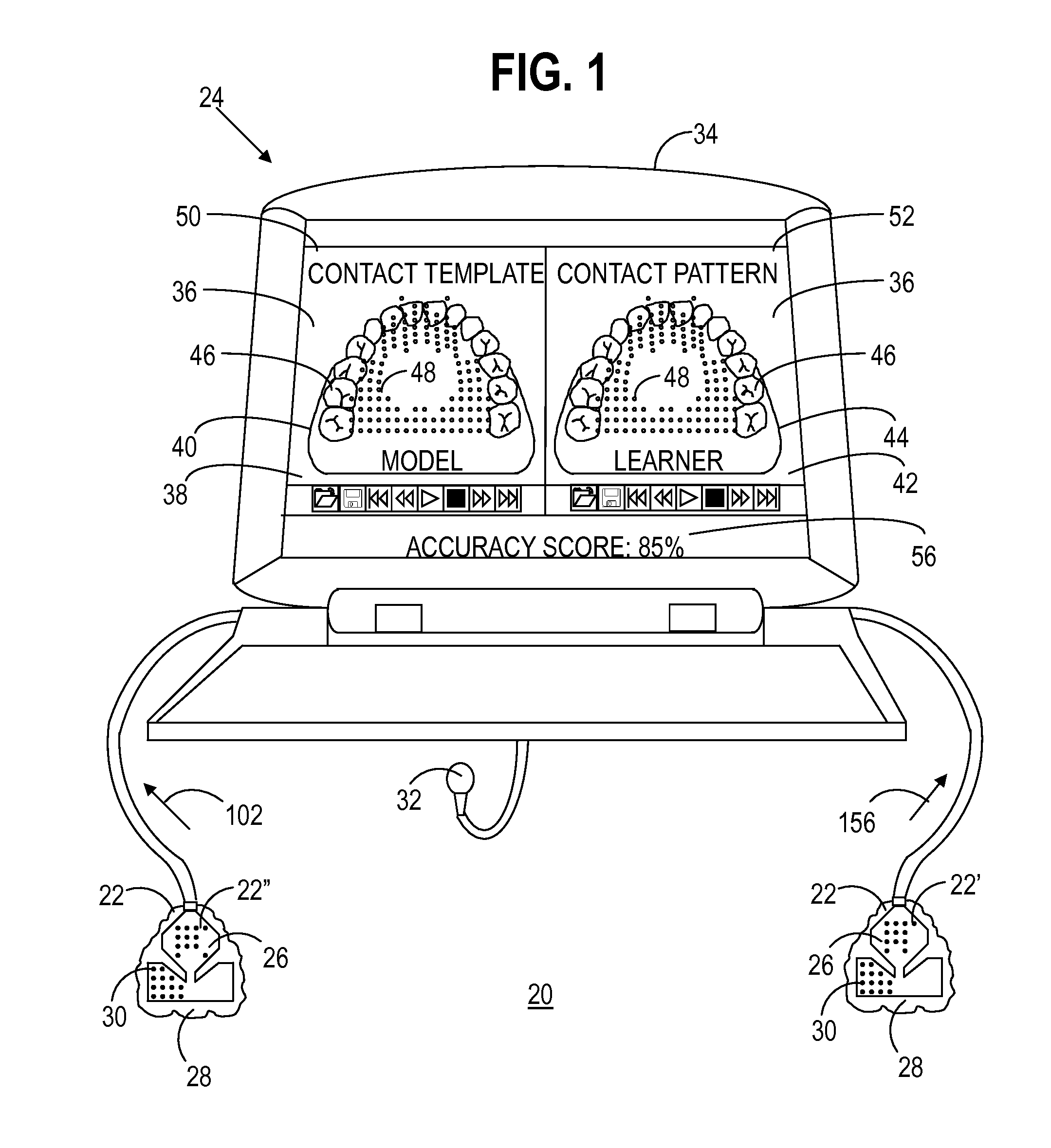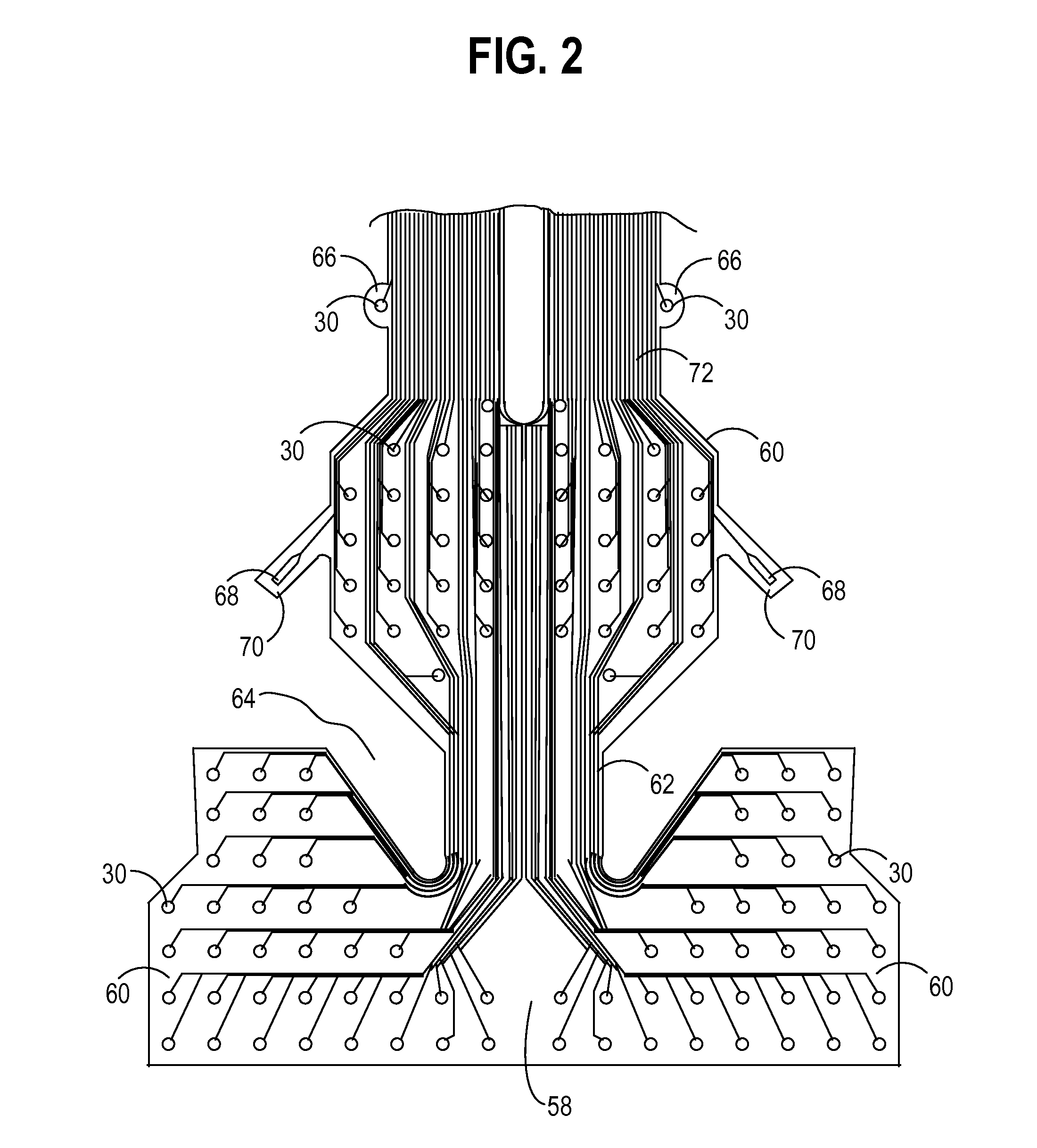Providing speech therapy by quantifying pronunciation accuracy of speech signals
a speech signal and speech technology, applied in the field of speech therapy, can solve the problems of difficult difficulty in speaking to anyone with impaired hearing, and difficulty in speech learning for any person with impaired hearing, and achieve the effect of quantifying the accuracy of speech pronunciation
- Summary
- Abstract
- Description
- Claims
- Application Information
AI Technical Summary
Benefits of technology
Problems solved by technology
Method used
Image
Examples
Embodiment Construction
[0027]The present invention entails a method, executable code, and system for speech therapy and visualization that includes providing a numerical score of the accuracy of pronunciation of speech by a learner.
[0028]FIG. 1 shows a perspective view of a system 20 that may be used for speech therapy and feedback visualization. System 20, sometimes referred to as a palatometer, makes use of linguapalatal (tongue-to-palate) contact information received from a normal speaking model and from a learner seeking to imitate the model.
[0029]System 20 includes a sensor plate 22, sometimes referred to as a pseudo palate, connected to a computing system 24 that serves as signal processing and display equipment. Sensor plate 22 includes a flexible printed circuit 26, described in detail in connection with FIG. 2, mounted on a baseplate 28. Flexible printed circuit 26 includes contact sensing electrodes, referred to herein as sensors 30, distributed across its surface in a grid array. Baseplate 28 m...
PUM
 Login to View More
Login to View More Abstract
Description
Claims
Application Information
 Login to View More
Login to View More - R&D Engineer
- R&D Manager
- IP Professional
- Industry Leading Data Capabilities
- Powerful AI technology
- Patent DNA Extraction
Browse by: Latest US Patents, China's latest patents, Technical Efficacy Thesaurus, Application Domain, Technology Topic, Popular Technical Reports.
© 2024 PatSnap. All rights reserved.Legal|Privacy policy|Modern Slavery Act Transparency Statement|Sitemap|About US| Contact US: help@patsnap.com










